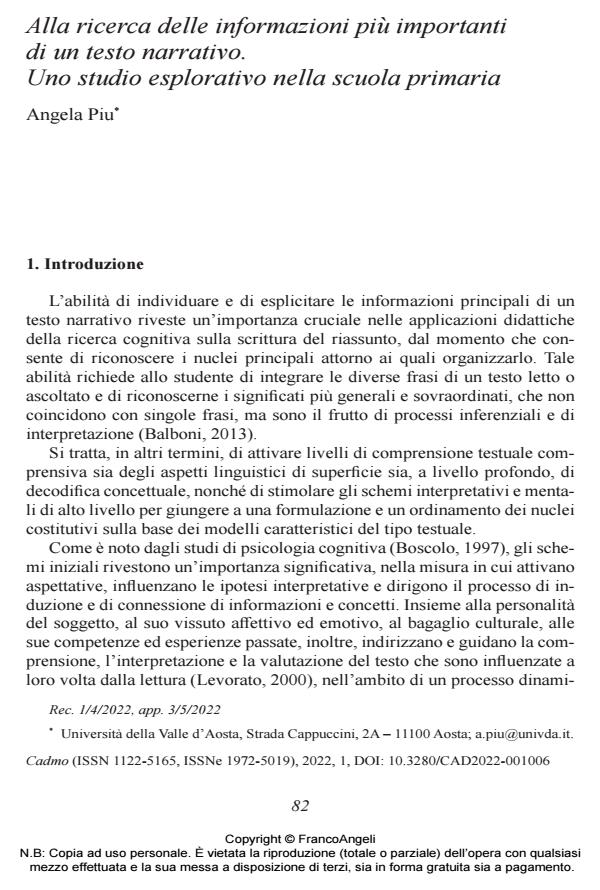In search of the key information in a narrative text. An ex- ploratory primary school study
Journal title CADMO
Author/s Angela Piu
Publishing Year 2022 Issue 2022/1
Language Italian Pages 16 P. 82-97 File size 226 KB
DOI 10.3280/CAD2022-001006
DOI is like a bar code for intellectual property: to have more infomation
click here
Below, you can see the article first page
If you want to buy this article in PDF format, you can do it, following the instructions to buy download credits

FrancoAngeli is member of Publishers International Linking Association, Inc (PILA), a not-for-profit association which run the CrossRef service enabling links to and from online scholarly content.
The article presents a mixed-method pilot study designed to examine the didactic functioning of a learning unit for primary students that comprised a simulation game and class discussion focused on identifying the key infor- mation in a narrative text. The research was conducted in May 2021 with 27 nine- to ten-year-olds attending "Ottavio Jacquemet" primary school in Verrés, Aosta (Italy). Comparison of the participants’ scores on tests administered both before and after the educational intervention indicated that significant gains had tak- en place (pre-test: M = 4.2 SD = 0.9; post-test: M = 5.4; SD = 0.6 at p < 0.05). Analysis of the dialogue between the teacher-moderator and the student group suggested that the children had been stimulated to identify the key information within a meaning-building process based on: identifying textual cues; connecting and integrating the various items of information contained in the text; and revisiting any erroneous understandings reflected in the video recordings and written materials produced during the simulation game.
Keywords: summary, simulation games, lesson, case study, primary school.
Angela Piu, Alla ricerca delle informazioni più importanti di un testo narrativo. Uno studio esplorativo nella scuola primaria in "CADMO" 1/2022, pp 82-97, DOI: 10.3280/CAD2022-001006